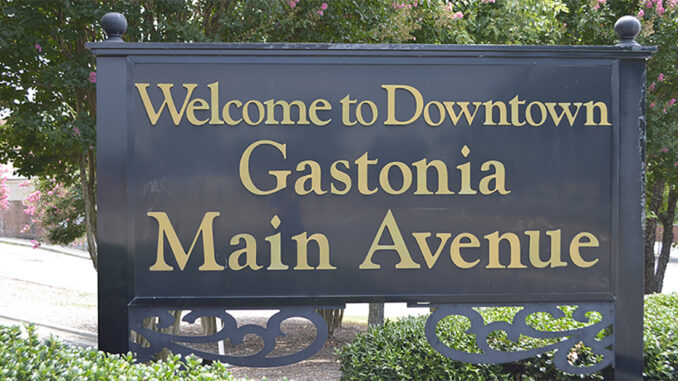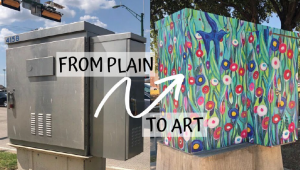
ElectriCities of North Carolina, Inc., the membership organization for municipally owned electric utilities, has awarded the City of Gastonia one of four $10,000 Downtown Revitalization Grants to help achieve the city’s downtown revitalization goals.
Gastonia’s Downtown Traffic Signal Cabinet Art Project

The City of Gastonia will use the ElectriCities grant to fund its Downtown Traffic Signal Cabinet Art Project, an initiative to enhance Downtown Gastonia with public art.
“This project reimagines traffic signal control cabinets as a blank canvas filled with a creative opportunity for the entire community to enjoy,” said Gastonia City Manager Michael Peoples.
Partnering with the North Carolina Department of Transportation and Keep Gastonia Beautiful, the art project involves wrapping NCDOT traffic signal boxes with colorful designs at eight downtown intersections.
“This project will present artistic designs that make Downtown Gastonia come alive in colors, figures, and patterns, helping define a distinctive welcoming character that belongs only to Downtown Gastonia,” said Peoples. “Along with serving as a great place making tool, this project enables us to continue supporting the priorities we’ve outlined in our Economic Development Strategic Plan.”
About Downtown Revitalization Grants
ElectriCities awards the competitive Downtown Revitalization Grants twice a year—each spring and fall—to its members in the North Carolina Eastern Municipal Power Agency (NCEMPA) and in North Carolina Municipal Power Agency Number 1 (NCMPA1). Grant proceeds must be used for projects that advance the community’s downtown revitalization goals and are approved by the city or town manager or chief executive. The next cycle for ElectriCities Downtown Revitalization Grants opens in March 2023.
“Study after study has shown that a thriving downtown is key to a thriving community,” said Carl Rees, ElectriCities Manager of Economic and Community Development. “Helping fund these high-impact projects inject needed energy into our members’ downtown areas, sparking growth and ultimately improving the quality of life in these public power communities.”
